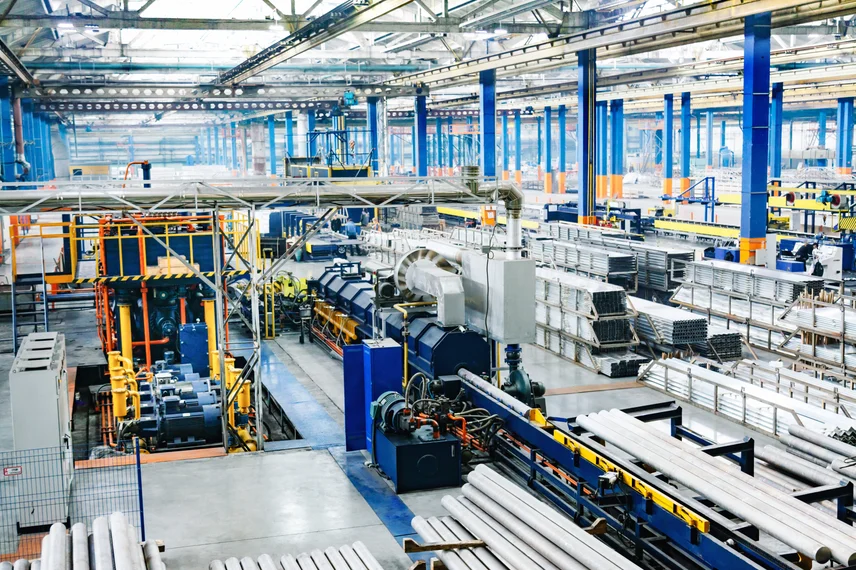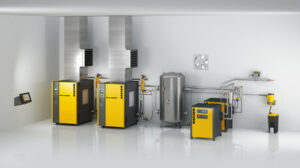The loss of a primary utility service within a production facility can bring with it a cascade of negative impacts. Developing an emergency backup plan to offset unexpected equipment losses or outages should involve provisions for temporary equipment.
The list below outlines ten key considerations that should be considered when creating an emergency plan. Developing a written strategy to deploy temporary equipment aids facilities of any size in managing operational interruptions or curtailments derived from equipment failures, power outages, or weather emergencies.
❶ FINANCIAL RISK ANALYSIS
Start with a contingency plan focused specifically on each of the major plant systems. These systems typically include HVAC, power, compressed air, steam, and cooling systems.
A review of each production area within a facility should be done to understand their dependence on each utility type. A financial impact should be associated with a potential loss, including lost production, labor costs, scrap, contractual impacts, etc. By quantifying these impacts, a priority can be assigned to the most important systems to address.
❷ RISK ASSESSMENT
A risk assessment can be done to identify the potential causes for interruptions, including equipment failure, power outage, raw materials, and off-quality. The cost impact of these scenarios can then be ranked according to the probability of occurrence, duration potential, and production impacts. An annual budget for emergency, temporary equipment may be considered, along with a historical review of rental expenses.
❸ EQUIPMENT IDENTIFICATION
A preferred service supplier or DRS account manager is available to work with your facility manager to catalog the primary equipment installed in the HVAC, compressed air, chilled water/cooling, and power systems. In addition to recording equipment ratings, the typical operating conditions should be noted in consideration of any seasonal variations. Where there is a formal equipment redundancy level, the current operational scheme should be verified against the minimally acceptable resiliency levels prescribed and any shortfalls addressed. If a formal plan is not in place, an N+1 design would be a typical minimum target achieved.
❹ PRIORITIZATION
Critical facility loads and process requirements should be evaluated and addressed according to the highest financial impacts on the business. Consideration for system prioritization or optimization along with load shedding/reduction can reduce the total amount of inputs and, in turn the total cost of operation. Determine what and where the critical levels are for maintaining stable production, even at a curtailed level.
❺ SYSTEM CONNECTION
The location, size, type, and method to connect temporary services to the associated plant systems should be determined. Understanding these requirements and any constraints ahead of an emergency will reduce downtime and expense. Temporary tie points should be chosen according to ease of access, along with minimizing materials to keep costs at a minimum. Calculations should be done to ensure the temporary utility meets the minimum/maximum criteria, e.g., pressures, temperatures, quality, etc. to be of sufficient impact. Determine if adequate valving provisions exist to isolate, maintain and support temporary equipment infrastructure. Consideration should be given to hazard avoidance and maintenance access as well.
❻ POWER AVAILABILITY
Verify and document the available spare electrical sources. Key factors are available voltage(s), amperage, feed size, or fuse/circuit expandability. Remember that a transformer or generator may be required to support temporary equipment in some cases. This may be true even if the main utility power has not been affected, as temporary equipment units may require more power than the permanently installed plant equipment.
❼ ELECTRICAL CONNECTION
Once it is determined whether existing electrical infrastructure, temporary generators, or a new dedicated electrical service will be installed, the location and method for making the temporary connections should be established. This plan should include provisions for any personnel or barriers. Cable gauge, length, number of runs per phase, and end-connection style should be determined. Ensure appropriately trained personnel will be making and verifying the electrical connections. For long runs of cable, make sure to compensate for any derating from line loss.
❽ TEMPORARY EQUIPMENT LOCATION
Equipment location is important for determining how much electrical cable, water/air hose, and ducting will be required. Consideration for the safety of the public and plant personnel, security, ease of placement, equipment clearances, structural loads, ground firmness and level, operating noise, emissions (generator), public visibility, auto and pedestrian traffic, permits, and many other things to minimize the impact on normal operations.
❾ EQUIPMENT RIGGING
An often overlooked but crucial factor with temporary equipment is the requirements for rigging, handling, and lifting at the site. The site should verify the capacity rating of any forklifts, cranes, or heavy equipment that will be used to offload the temporary equipment in a safe manner. For larger equipment that requires a crane lift, determine the appropriate sling lengths and spreader bar requirement when required. If the equipment is located outdoors, ensure the ground is sufficiently stable for the lifting equipment to move and operate. If the facility does not own adequately rated lifting equipment, a rental lift can usually be procured. Renting lift equipment requires additional coordination and the need for a staff capable of operating the machinery. Alternatively, the rental equipment supplier can usually mount the equipment on a job-site trailer where the equipment will remain in place for operation. In this scenario, be sure and confirm the best orientation of the trailer for ease of connection, as moving these trailers requires a tractor truck.
❿ PLAN CREATION, IMPLEMENT & PERIODIC REVIEW
A written plan should be created with the key items outlined above. Dynamic Rental offers contingency planning services for all compressed air and HVAC/Cooling needs. Consider including an estimation of equipment rates along with a summary of budgeted funds. A written plan from DRS will include the recommended temporary equipment solution(s), the total investment required (both capital and expense), budgetary figures for the temporary solutions, including first plus recurring costs, and detailed roles and responsibilities for internal and external resources. To expedite the delivery of a temporary system in an emergency situation, it is important to ensure all documents, such as purchase orders and rental agreements, are completed and that all recommended building modifications are in place. This plan should be reviewed and adjusted annually or as needed when facility or personnel changes are made.



